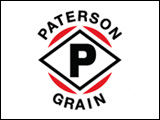The Prairie Swine Centre is taking a proactive approach to evaluating options for utilizing what’s expected to be lower than normal quality cereal crops this coming winter.
Cold 2009 growing conditions have delayed crop development raising the risk of quality loss from crops being harvested before reaching maturity, frost damage or sprouting.
Dr. Denise Beaulieu, a research scientist nutrition with the Prairie Swine Centre, says scientists are looking at previous research examining the utilization of low quality feed ingredients to be ready for questions producers might ask and planning studies to look at factors in the 2009 crop that could affect feed quality.
We certainly would like to see producers, if they are buying grain and if they are able to buy it based upon either energy or protein value, to have it tested however we know that’s not always the case.
They don’t have time to always send a sample off to have it tested.
If they are concerned about the quality of it certainly have it tested.
Otherwise, for a lot of these crops, book values are often almost as good as what they can do by testing.
One of the issues with low quality grains is that, having it tested, the absolute amounts don’t always change a lot.
What’s affected is the digestibility of that grain and having it tested in a lab would not indicate the digestibility.
There are formulas and equations that have been developed that predict it.
The problem with it is if there is damage these equations have been developed using high quality grains and they may or may not work properly for a damaged crop so predicting or evaluating the digestibility of either energy or protein is difficult and that certainly is one of the big problems and looking at these predictive equations will be something that we are looking at to see if they are applicable to this year’s crops.
Dr. Beaulieu notes freezing or sprouting doesn’t necessarily always decrease the feed quality of these grains.
However she stresses producers need to be aware the potential development of mold or mycotoxins, especially if the grain is harvested immature or wet.
Source: Farmscape.Ca



